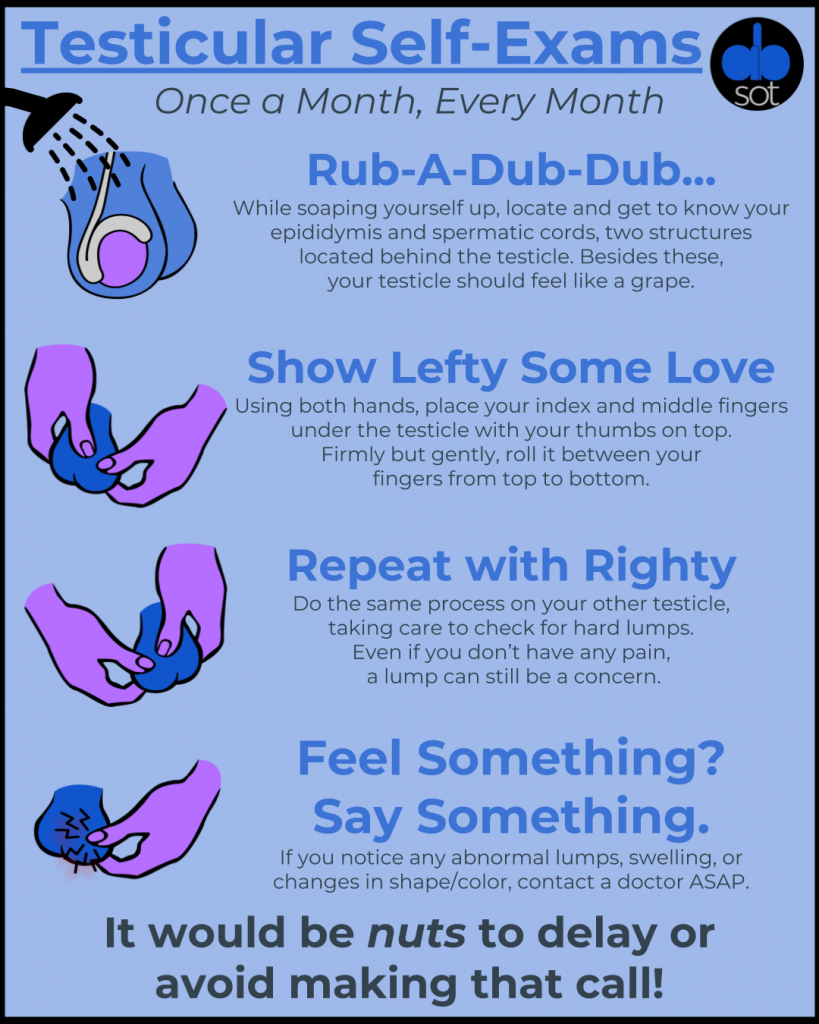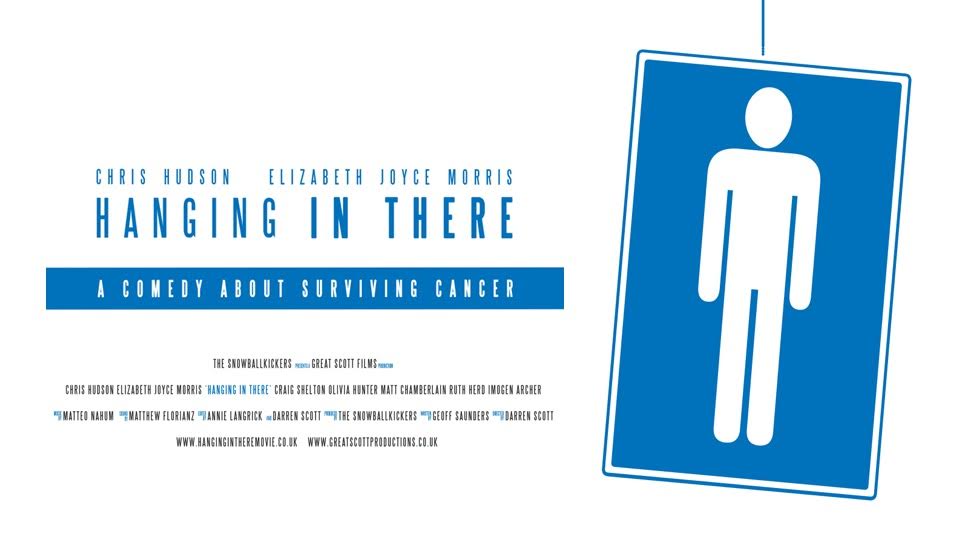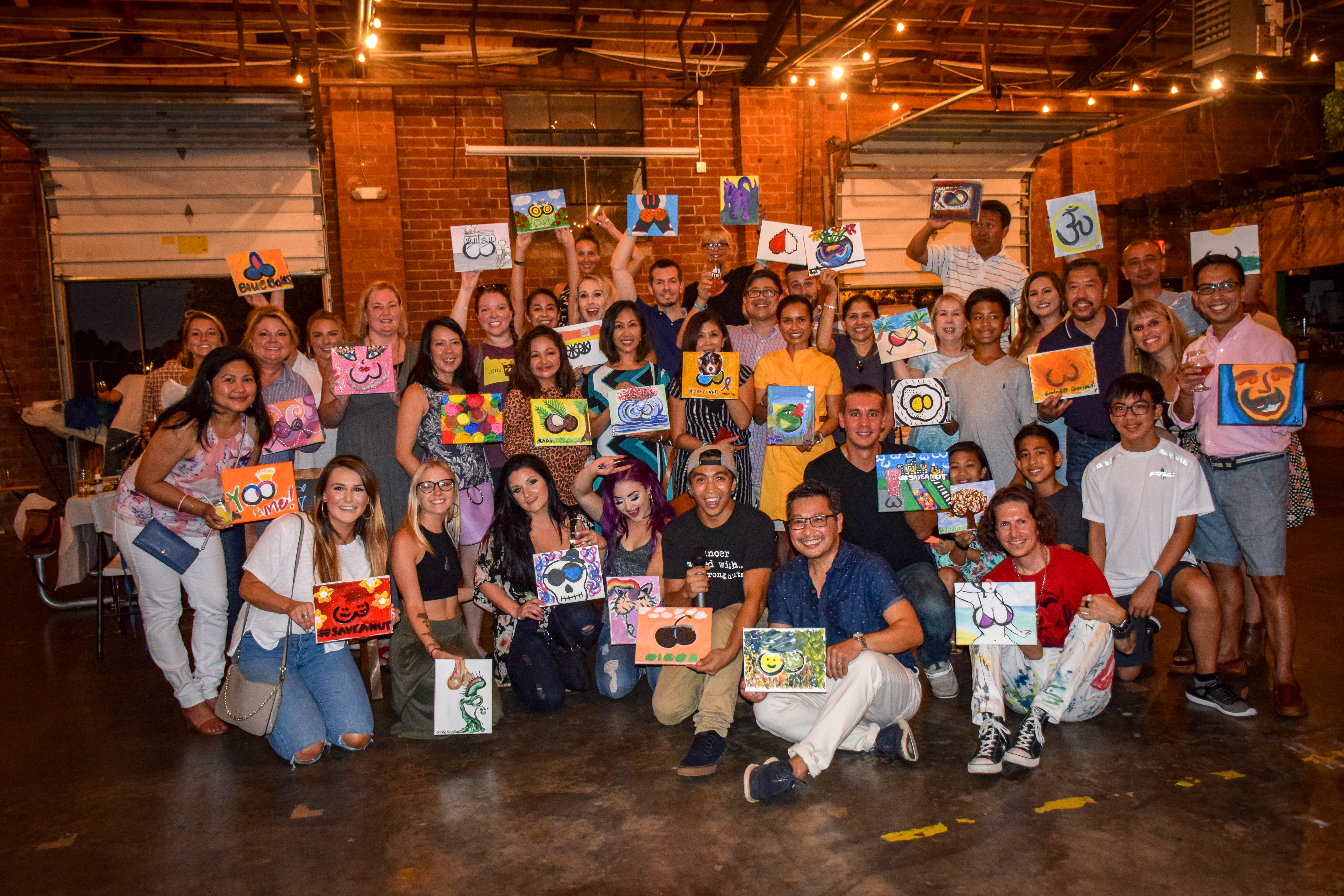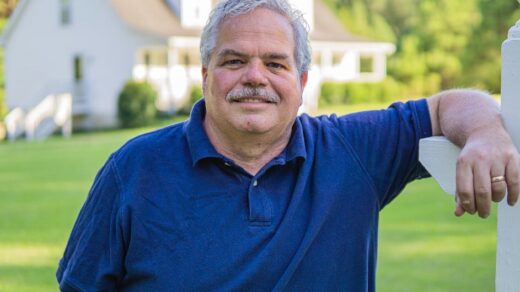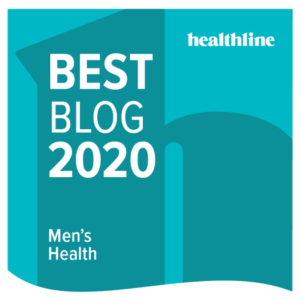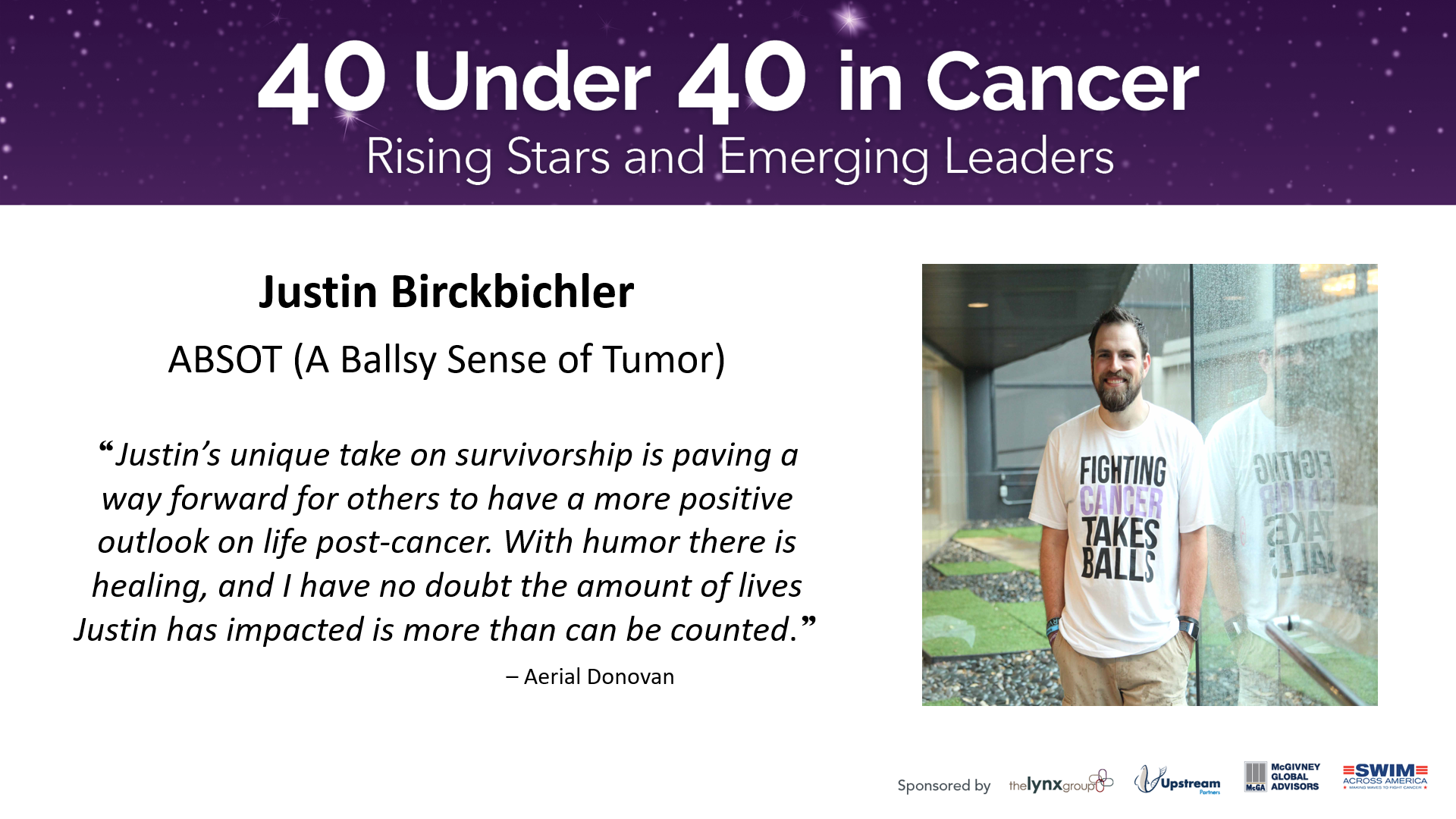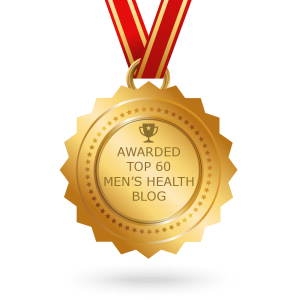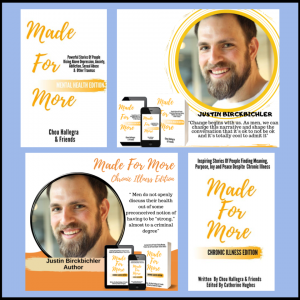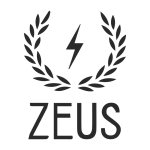So You’re Facing Chemotherapy for Testicular Cancer?
One of the most popular books for pregnant women is What to Expect When You’re Expecting. This book details the physical, mental, and emotional changes they’ll undergo as they travel through their journey and get that happy news – it’s a healthy boy/girl.

As I began chemo for testicular cancer in November 2016, I realized a male-centric version, entitled What to Expect When You’re Expecting Chemo (Because Your Testicle Decided to Go Rogue and Try to Kill You) would have been a helpful title in my library.
Unfortunately, this volume has yet to be written (which I’m going to chalk up to the obnoxiously long title). It looks like it’s up to me. I’ll be penning the first draft here, based on my experience of three rounds of BEP (bleomycin, etoposide, cisplatin) chemo. Throughout this piece, I’ve also linked to specific, longer blog posts about individual side effects or things I experienced – feel free to read those to learn more.
As you read, please keep in mind that I am not a medical professional, and this is just my experience. My single qualification for writing this piece is that I have one, single ball.
Part 1: Before Chemo
So you’ve been diagnosed with testicular cancer. It sucks. I’m not going to sugar coat it. Here’s the good news – it’s usually highly curable. I’ve been there and got through it. It’s not going to be easy, but it can be done.
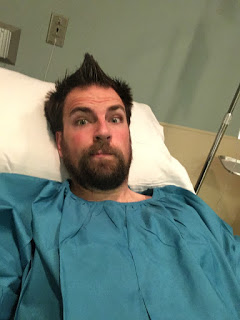
You’ve probably had your testicle removed by this point (for me, it was my left one – RIP Lefty) and the pathology came back as cancerous. Most likely, you’ve had a CT scan and it was shown that the cancer has spread. In my case, it had spread to my lymph nodes.
When all’s said and done, the process has probably moved pretty quickly to this point. You may have had some symptoms of pain or heaviness in your testicles (or maybe just happened to feel a lump during a routine self-exam like I did,) which seem to be magical words to get an immediate doctor appointment.
Before chemo can start, there’s work to be done!
You’ve met with an oncologist and he’s said you need to have chemo. Depending on your staging and medical history, it could be 2-4 rounds of either BEP or EP chemo. Being a Stage II patient, my plan was to have three rounds of BEP that would last for nine weeks.
First, if the option to get a port is given to you, I highly recommend it. It was a godsend. Rather than getting pricked by a needle in my arm every time I was getting chemo, I had a device implanted just under my collarbone that allowed them to access a vein in my neck easily. When it came time for an infusion, they numbed the skin and then the fun can begin.
But we’re getting ahead of ourselves.
I also had to get a pulmonary function test, which is a lung capacity and efficiency test.
This was done to establish a baseline of my lungs before starting chemo. If I felt short of breath after completing chemo, we could redo this test to see if the chemo caused any lung toxicity, which is a potential side effect of BEP, or if I was just out of shape before chemo too.
Let’s get frank here. You’re probably going to want to bank some sperm.
In most cases, fertility will return a few months or years after chemo, but better to be safe than sorry. There is even evidence to support that sperm aren’t affected in the long term when only having one cycle of chemo.
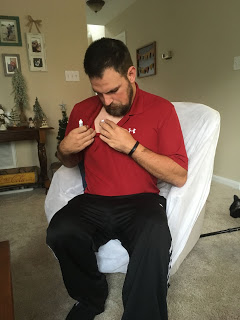
I’m not sure if I even want kids, but I don’t want that decision made for me. Visiting the cryobank was less than exhilarating, but I produced a sample. Millions of little Justins are now being stored for the next five years in a fridge in northern Virginia.
I also had to make arrangements for time off of work, since I wasn’t going to be able to work during chemo.
I teach elementary children full time, and they’re basically living, breathing germ factories. That doesn’t mix well with a lowered immune system, which we’ll touch on later. Your work situation may be different, but it was a huge help to be able to have time off to solely focus on healing.
My oncologist’s office was awesome and gave me a chemo orientation a week prior to starting chemo. I recommend asking for one if you’re doing it at a private clinic or even if it’s at a hospital. You’re going to be spending a lot of time there; the worst they can do is say no. It’ll help set your mind at ease and prepare you for what to expect.
Now that all your ducks are in a row and you’re on the ball (pardon the bad pun,) it’s time to get started on your chemotherapy.
Part 2: Nine Weeks and Counting
On my first day of chemo, I was ready to get started. I wanted to become a cancer warrior that even the Spartan King Leonidas would fear. I marched hobbled (since I was still recovering from my orchiectomy) into the clinic and sat down in the world’s most comfortable recliner. This would be the throne from which I would rule chemo for the next few hours.
My chemo was in three week rounds – five days in week one, and one day each in weeks two and three. The five day sessions would each last about five hours, while the one day sessions would only be about thirty minutes. Most days started with blood work before chemo, to ensure I was healthy enough to receive chemo.

The first day was mildly interesting, getting to learn the names of the drugs and what they did. Ask me right now what exactly they all were called and you’ll get a blank look from me. (This is why I blogged my experience, which I found to be an absolutely cathartic experience and will address later on.)
Women have “go bags” for their impending hospital stays while they’re giving birth. You should have one, too. Bring everything you think you’ll need to be comfortable. Within my Marvel-themed backpack, I included a blanket, slippers, my Chromebook and iPad (and headphones), an extra phone charger, a sleep mask, and some snacks.
On the topic of food, you may not be as hungry anymore.
I found my appetite diminished as time went on. Some days, I had a desire to wolf down some Chick-Fil-A nuggets and waffle fries, and other times I would refuse to even eat some crackers. I simply wasn’t hungry and most things tasted “off”. Rice was especially traumatic, but that comes later.
My best suggestion? Find what sounds appetizing to you and eat as much of that as possible when you can. For me, it was a lot of Chick-Fil-A and pizza. Maybe not the healthiest, but it was what I liked. Reward yourself. I also liked canned peaches, Jello, pudding, and applesauce. You would think that by not eating much, you would lose weight, but I actually gained a few pounds from start to finish.
One thing that contributed to my distaste for food was how sensitive I became to smells. Anything besides a fresh linen or clean air scent would make me feel very sick. We had just gotten a puppy before I was diagnosed, and her smell would cause some nauseous feelings. Potent smelling foods, such as steamed broccoli, were also a no-go in our household.
Along with smell sensitivity, my eyes became very sensitive to light. To paraphrase Bane from The Dark Knight Rises, darkness was my ally.
Wondering more about that nausea?
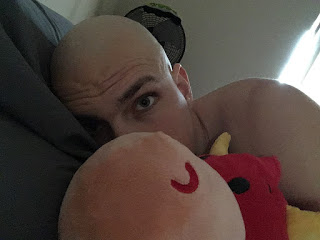
I was fortunate that I never got physically ill and vomiting… right up until treatment 19 of 21. I spent five days painting the insides of toilets and buckets with various meals. Remember my aversion to rice? Try shooting it out of your nose. Not a fun time. They upped my anti-nausea meds and gave me IV fluids to make sure I didn’t get dehydrated. Eventually, the storm passed and I felt much better.
You’re going to be tired and fatigued.
That’s ok. I spent lots of time sleeping when I got home from chemo. A typical day would be chemo from 8:00 am to 2:00 pm, nap from 2:30 pm to 6:00 pm, a very light dinner and relaxing till 8:00 and then straight to bed to start this party all over again.
You may find that the steroids they give you during infusions to help make the anti-nausea medicine more effective will keep you awake have give you trouble sleeping. I asked my doctor for Ambien and it worked like a charm. For a while, I couldn’t sleep without it, and sleep is crucial to healing.
Probably one of your biggest questions is “Am I going to lose my hair?”
I can’t answer that for certain, but in my case, I did. To be honest, it was like someone had flipped a switch shortly before beginning my second cycle. One evening everything was fine, and on the next, my deodorant was covered in armpit air. My head hair soon followed. I decided to take charge of the situation and shave it all off myself a few days later. Small victories count for a lot and this was important to me.
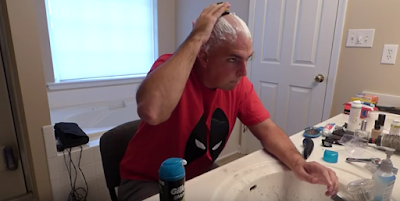
I never fully lost my eyebrows and eyelashes, but they thinned out considerably. My eyebrows could be confused for Groucho Marx, so them thinning wasn’t a terrible thing. Since my chemo spanned the winter, I invested in a few beanies to keep my head warm. As my hair regrew in the spring, I rocked a baseball hat to protect from the sun. One cancer is enough for me – I don’t need skin cancer too.
Shaving my head was the least of my problems, because soon after, my immune system and white cells hit the floor.
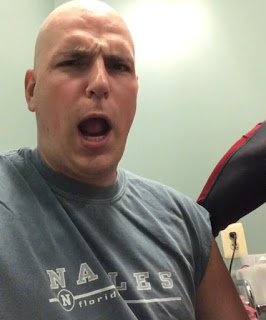
After my first round of chemo, my white cells had dropped to nearly a third of the minimum. Chemotherapy drugs work by attacking rapidly dividing cells, since that’s how cancer grows. This is also what wipes out immune systems and causes hair loss. I had to wait til my cells rose enough to start chemo again, which pushed back my regimen by a week. After my second round, they gave me neupogen shots, which worked to stimulate white blood cell production. This came with a side effect of severe bone pain for a few days, but was worth it so I didn’t have to delay chemo any other time.
One symptom that isn’t immediately visible is chemo brain.
Chemo brain is a phenomenon experienced by many cancer patients that’s defined mainly as a general fogginess in one’s mental capacity. I experienced it early on and it only got worse as it went on. It was hard to focus on anything, especially reading, and I became extremely absent minded. One time, I went up and down stairs six times (which was a feat in and of itself) because I couldn’t remember why I kept going downstairs, only to remember when I got upstairs, and then forget when I returned downstairs… Having a support system was crucial here (along with Google Keep and/or sticky notes for personal reminders).
Speaking of support systems, don’t think you can do this alone, nor should you have to face it by yourself.
Find a support system. For me, my fiancee and my mom were my primary caregivers. They worked as a team to play zone defense – one covered me while the other managed the house and our pets. They were there for whatever I needed – bring me things when stairs were too daunting or listening to me when I was feeling down. Find someone (significant other, family member, friend, etc) and appreciate what they’re doing for you. Cancer isn’t a battle you have to fight alone, and it affects everyone in your life.
That being said – attitude is everything. Yes, chemo and cancer sucks. My personal motto is, “Don’t make excuses; make changes.” You can’t control that you have to go through chemo. But you can change your mindset. There were times when I got down and sad. But I kept my eye on the prize.
I wanted to get this done and over with, with a smile on my face and a warrior’s spirit in my heart. Keeping my sense of humor was so important to me. People would say that I was nuts for sharing stuff so publicly, but I said, “Sorry, I’m only a nut.” Cancer had invaded my body, and it has messed with the wrong hombre.
Finally, the day will come.
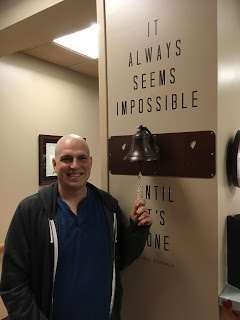
collage above
Oh, it will seem like it’s far away, but it will come. Your last chemo day. Many chemo places and hospitals will have a bell to ring when you finish your last treatment. After ten weeks (to account for that extra week off thanks to the white blood cell debacle,) I was finished.
I may have been exhausted and weary from a long battle, but nothing was going to stop me from ringing that bell. As I rang it, I read the words that were painted on the wall above it:
“It always seems impossible until it is done.”
Part 3: After the Chemo is Done
For a few weeks, I entered a bit of a limbo stage. I wasn’t officially done with cancer, but I wasn’t actively being treated. I had to funnel my energy into getting back to a sense of normalcy.
About a month after I finished chemo, I had a follow up CT scan. A week after that, I got the results. I was now in remission! I would be tracked closely with routine visits and other scans for the next few years. Yay for canister after canister of barium solution!
While the vomiting had stopped, the feeling of nausea hadn’t fully diminished immediately.

I found that sucking on mints, ginger drops, and queasy pops (which are lollipops specially designed to quell nausea) helped stave this off. Eventually, this went away, but it definitely took somewhere between 4-7 weeks after chemo was over for me to notice major improvement. A few months later, I didn’t have any remaining feelings of nausea, but I still do not like the taste of plain water, so I add some lemon to it.
Feelings of fatigue went away around the same time.
Building up my stamina by walking short distances, then longer distances, then jogging, then run/walking, then running helped. Stairs were no longer my greatest nemesis, as they had been for the past few months between my orchiectomy and chemo fatigue.
Around the four months post-chemo mark, I was running or doing P90X workouts at least four days a week. Within seven months, I had resumed normal activity levels, and even joined a gym, but more on that later.
In addition to my stamina being back up, so is my hair.
I mean this literally – I have a faux hawk hairstyle.
It began regrowing about a month after finishing chemo and by six months, it was back to the length it was before I lost it all. First, it was a rich, blonde fuzz, which is different than my thick, dark brown hair. Eventually, color returned, as did the length. The texture is slightly different, and your hair may regrow in a different color or texture too.
Control over yourself will return soon too.
You won’t need to rely on someone to do everything for you. My fiancee stopped being my caregiver and became my partner again (although dishes suddenly became my responsibility once more – one thing I do miss from being decommissioned).
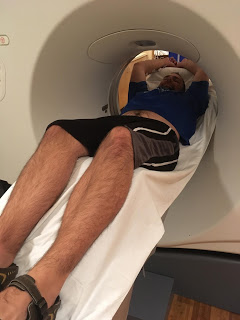
Chemo brain will fade, and it some remnants still linger within me to this day. My short-term memory has small gaps and I struggle to get some of my words out immediately. However, it’s marked improvement from the thick of things. I can read and focus on a regular basis, but some of my processing is just a bit slower. Perhaps I’m just getting old, though.
The physical bounceback is just the beginning. Being deemed a survivor is just the first step in a longer recovery.
You may have physically returned to normalcy, but this is probably the first time your life has slowed down enough to process what has just happened to you. People may see that you’re back to normal in appearance, but they can’t see what’s happening inside.
Recurrence is a real fear. It’s something I grapple with on a regular basis. I thought I found a lump on my remaining testicle and immediately had it ultrasounded. This happened again about a year later, and luckily, both times were found clean. Since then, I’ve had around five more clear CT scans, showing that I remain in remission. Passing those first two years is a huge milestone – and they don’t require barium solution any longer!
Don’t overlook your mental health.
I went to therapy for a few weeks to help contend with my worries. Ironically, I never actually talked about my cancer fears in therapy. Other life things seemed to come up as more pressing matters. My moments of worry and panic seemed to be isolated to times when I wasn’t at the therapist’s office. Remember that support team? Lean on them. They were with you in the thick of it, and I’m sure they’re not going anywhere.
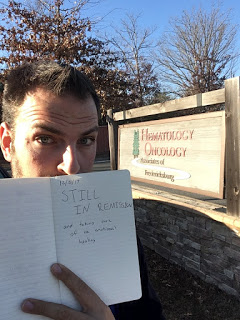
Another helpful resource was an online therapy program, geared specifically for testicular cancer survivors called eTC, which I found hugely beneficial. It allowed me to move through it at my own pace.
After months of grappling with processing what had happened in such an abrupt timeframe, I finally admitted to my doctor that I was experiencing depression and asked for antidepressants. After a few adjustments and battles with insurance, I found the right dosage and feel so much better.
Whatever route you decide to pursue, be mindful of the impact your diagnosis has on your mental health.
One thing that helped me through this entire journey was writing.
I’m not a very outwardly emotional person. Ask me how I’m doing, and I will probably just say that I’m fine. As I started my journey, I began writing down everything that was transpiring. What started as a private Google Doc for myself turned into this website you’re currently on, where I’ve documented each and every thing that happened in my life from October 2016 to present day. Part of it was to help others by providing the resource I wish I had when I was first diagnosed, but it was also helping me.
I may not be one to talk about my feelings, but there are over 100,000 words on the site that helped me to process what was happening to me. That’s probably what helped me most, and continues to help me to this day. I suppose we can add an additional 3,500 words to that total now!
Another benefit is that I have all elements of my journey recorded in one place. I occasionally look back at old posts and find details I had forgotten (thanks chemo brain).
Physical fitness and healthy eating are another good ideas to invest in.
Heading to the gym on the regular is the one of the biggest changes I’ve made since becoming a cancer survivor. I change it up between weights, cardio, and other different types of activity. Not only is it great to prove to myself that I can regain my strength and body, but it gives me a place to recenter myself and reflect.
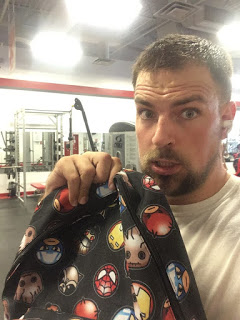
Another big change I made was in how I ate. I eat more whole foods, home cooked meals, weigh nearly everything I eat, and put it all into my FitBit app to help track nutrients and calories. I do allow myself to indulge, but in more moderation.
Since making all of these changes in August 2017, I’ve shed over forty pounds, dropped nearly ten percent of my body fat, increased my running stamina, and nearly doubled my maximum lifting stats.
You don’t have to take it from me that physical fitness is a great idea. The American Cancer Society recommends at least 150 minutes of moderate activity per week to lower risk of cancer.
Being told you’re in remission isn’t the end; it’s just the opening to Act II of your life.
Don’t think of yourself as just a survivor – look to the root word “survive.” You’ve been given a second chance. Not many people get this opportunity. Focus on what is really important in your life. Make the most of it.
Your next steps now that you know what to expect? Pass on your knowledge.
Testicular cancer can affect any man of any age. Share your story and how to do a self-exam. You never know who might need it when. It’s better to have it and not need it than not have it until it’s too late.
Early detection saves lives, and smart preparation can help improve it.
A self exam is how most cases of testicular cancer are detected early. Click the image for video directions or click here for a larger version
Want to work with Justin? Click here to learn more.
ABSOT is endorsed by the Laughter Arts and Sciences Foundation, a registered 501.c.3 charity. To make a tax-deductible contribution to help continue ABSOT's work with testicular cancer awareness and men's health, click the image below.

